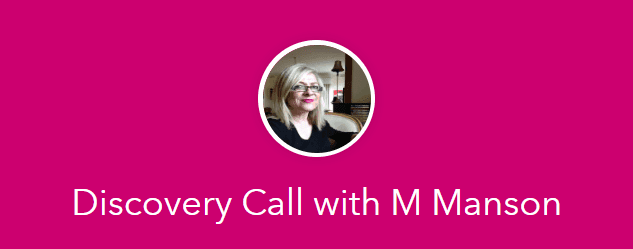Silos may be killing your business. How to find gold in grey areas between silos.
Do you want to achieve great and repeatable results for your business and your career? Stop sweating the small stuff and discover the thrill of ‘random collisions of unusual suspects’. Find the gold in the grey areas between silos by connecting the dots horizontally.
Business is a team sport.
But it’s more serious than that. It’s a war. And you can’t win it alone. Any war, first and foremost, is the war of allies with different types of resources and different advantages. In business, silo thinking and actions prevent us from achieving greatness by not utilizing diverse knowledge, skills and resources to their best potential.
Just consider your situation. If you are a marketing professional, do you regularly talk to your IT or logistics or even sales people to explore new solutions through conversations – without the pressure of a specific project hanging over your head? Or, as an IT specialist, do you go out of your way to develop relationships with sales people, marketing or even admin staff, to see how to create an ‘organic’ solution rather than a stiff protocol? The easiest thing, when you are ‘sweating the small stuff’ is to say ‘it can’t be done’ and miss a great opportunity.
That’s why collaboration is so important. It’s when we learn to collaborate and explore the grey areas between silos, that we gain true competitive advantage. Collaboration, internal and external, will allow you to punch above your weight in whatever you do, and create value for your business and your customers, you haven’t considered possible before. And, importantly, your competitors haven’t considered possible.
“Everything has changed except our way of thinking,” Albert Einstein
Business Model Built for Speed
As part of the Collaboration 21 series, I spoke with Saul Kaplan, founder of Business Innovation Factory, a real-world lab for experimenting with business models, and author of “Business Innovation Factory – How to Stay Relevant when the World is Changing”. Based on 30 years of innovation practice, Saul outlines a comprehensive methodology for creating R&D for business models. The system and its benefits are a common sense choice, but also prove that common sense is most uncommon among people.
“One of my biggest pet peeves is setting strategy one tactic at a time. It drives me crazy to see people and organizations who think that if they just work hard enough and do more things that a strategic direction and destination will emerge. It seems that most of the world works this way. It is terribly inefficient. How many people and organizations do you know that pedal the bicycle like crazy but never seem to arrive anywhere? They just keep pedaling harder, hoping that something will eventually stick. It is exhausting watching them,” says Saul.
I completely agree with Saul. I hear people saying they have 157 priorities or are too busy with adjusting nuts and bolts and ‘change management’ before they can even look at ‘innovation’. We know that focus on product innovation mostly doesn’t work, especially in small markets like Australia. Products are too easy to imitate, success is not easily repeatable and the competitive advantage is too short-lived for the effort involved. Product innovation is a function of an ecosystem: marketing, market situation and competition. As you know from my previous article Taming Collaboration Ecosystems, even great products and perfect execution on your part will lose to a good solution that leverages the entire ecosystem.
At best, your product will sit on the same shelf as the competitors’ and, on every level and in every category, it comes down to the customers’ personal preference or price. What will they buy: Jindi Brie, King Island Brie, or some French Brie; or, Audi, BMW or Benz? How can you find new solutions and uncover real problems to solve, if you are looking at things from the same perspective all the time?
Where does meaningful collaboration start?
Random Collisions of Unusual Suspects
“We hang out with the usual suspects; people that work in the same industry or work in the same function or discipline as us. Watch what meetings people go to…they always go to the same meetings, right? And it is always the same people at these meetings talking about the same things that they’ve been talking about for forever. How do you learn anything new? If you really want to get different results, you should do what I call ‘enabling the random collision of unusual suspects.’ You should go hang out with people you are uncomfortable with and represent entirely new industries and disciplines. You should create more of those random collisions because by doing that you are more likely to learn something new and find the gold that lies between silos,” Saul advises.
Over the last five years, I purposely tried to position InnoFuture as a hub for business innovation knowledge and thinking. I strongly believe that a business innovation model is the canvas on which new products and, importantly valuable services can be created, successfully, sustainably, and, most of all, cheaply because they emerge from a common purpose and engage people in doing things right, the first time.
Saul comments in his book: “It seems so simple. Setting a strategic direction provides a way to know which tactics are aligned and contribute to reaching the destination. The destination may change along the way, requiring different tactics, and that is okay, but not having a destination at all is a ticket to nowhere.”
“When John F. Kennedy said, “We choose to go to the moon” in 1961, Americans rallied around the destination. We believed it was possible, and the goal of setting foot on the moon rallied a country to advance its global science and technology leadership. It was cool to study math and science and clear that innovation was the economic engine that would drive American prosperity. Today, we have no clear destination, in space or on earth.”
So, whether your business is in new technologies, in utilities, architecture, consulting, food manufacturing, even… yes, automotive manufacturing… or, whether you are a CEO or Business Improvement Manager, or Innovation Champion, and want to get 110% out of your people and organisations, or just to get them to support your idea … you can apply the emergent collaboration in the 21st century thinking and tip the odds of success in your favour.
5 steps to re-engineer your business process:
1. See the bigger picture – set the direction based on how you want to address your customers’ evolving needs: around your Vision and criteria for business development.
Saul Suggests: “A bold business model innovation objective should inspire like a moon landing. By making the strategic objective clear it will send a strong message to everyone in the organization and provide a basis to align resources and activities necessary to enable business model innovation.”
2. Start the thread of your story – (it saved Scheherazade) to ignite people’s imagination and involve them in the process from the start. Success is not a ribbon tied neatly on the outcome, it’s a process on which you build from the first spark of an idea; make it easy for people to ‘buy’ from you by engaging them in co-creation and ownership of your story. Create the big picture and let others add to it! Remember, collaboration is about leveraging the resources, talents and skills of others.
3. Make horizontal connections – as an innovator, you are already scanning the environment for new sources of knowledge. But are you looking in new places or the same places where your competitors are looking? Make an effort to set yourself up for ‘random collisions of unusual suspects’;
4. Have a platform – have a means of consistently connecting people around learning, exchanging and building knowledge. It can be an exclusive group by invitation or application – not prescribed. The Platform is a special place to meet, connect, and share information and experiences, so that everyone is on the same page. It’s not just about document sharing and specific projects. It must be big goal specific, a place for active thinkers who love learning and generating ideas. All they need is direction – a common purpose, even if the reason to participate is different for different people. Physical connections are not your only choice. There are plenty of collaboration tools on line, including InnoFuture Dojo.
5. Start the reaction and get out of the way – create a ritual and allow others to develop it and take ownership. People like to belong and even more to own their ideas. Ritual is a special time to regularly ‘bump’ into each other; do something unique as the group (like wear a wrist band); or attend regular inspirational ‘events’ – online, off-line or a book club. Power to the people! Just stay tuned and enlist a group of informal leaders to nurture the movement and ensure the value of the network is maintained by the pursuit of the big goal.
“If we can lift our heads above the silos and see the grey areas in between, that’s where the gold is”, comments Saul.
Here is the fact: while business model innovation is your best chance of creating sustainable distance between you and your competitors, it is not a permanent solution either. Your competitors have access to the same networks and eventually can imitate or even push you out of your ecosystem. That’s why, it is essential to understand how your ecosystem connects and how to navigate it. Implementing the 5 Steps above to develop will help you build internal proficiency in collaboration.
Conclusion
 The problem with many business executives and strategists is that in the constant pursuit of new information, we hoard it. We internalize knowledge, rather than gathering diverse people with shared purpose and information around us and empowering them to co-create crazy new solutions that provide value for our customers.
The problem with many business executives and strategists is that in the constant pursuit of new information, we hoard it. We internalize knowledge, rather than gathering diverse people with shared purpose and information around us and empowering them to co-create crazy new solutions that provide value for our customers.
To be a true leader, you need to be a catalyst. You need to open the door and let people in on the know-how and catalyze the outcomes by setting the right challenge – the big goal. Knowledge is power only when it’s utilized. When you know how to collaborate and teach others, you will get better results, more often.
What you can do now is to quickly check out your Collaboration 21 play-book and lead by example to involve others in using this tool. Then discuss it – in the context of a common project. Then, ‘try stuff’ quickly and cheaply. And move on to re-define the challenge.
Start the reaction. Start a movement!
About Collaboration 21 Series Get Collaboration 21 Play-Book
 InnoFuture helps organisations build innovation culture by helping them develop individual context based on their Vision and non-negotiable principles to guide and inspire people in their daily jobs. In the ever changing world of business models InnoFuture remains unbiased because there is no one-fits-all-business-model or silver bullet tool you can give to your people out of context. Instead, we continually explore and curate emerging concepts, tools and expertise; and connect business innovators with the resources they need to get results. If you want to get started or deepen your organisation’s innovation capacity through innovative culture then we can help.
InnoFuture helps organisations build innovation culture by helping them develop individual context based on their Vision and non-negotiable principles to guide and inspire people in their daily jobs. In the ever changing world of business models InnoFuture remains unbiased because there is no one-fits-all-business-model or silver bullet tool you can give to your people out of context. Instead, we continually explore and curate emerging concepts, tools and expertise; and connect business innovators with the resources they need to get results. If you want to get started or deepen your organisation’s innovation capacity through innovative culture then we can help.
Contact: Margaret Manson or 0407 661 130.


